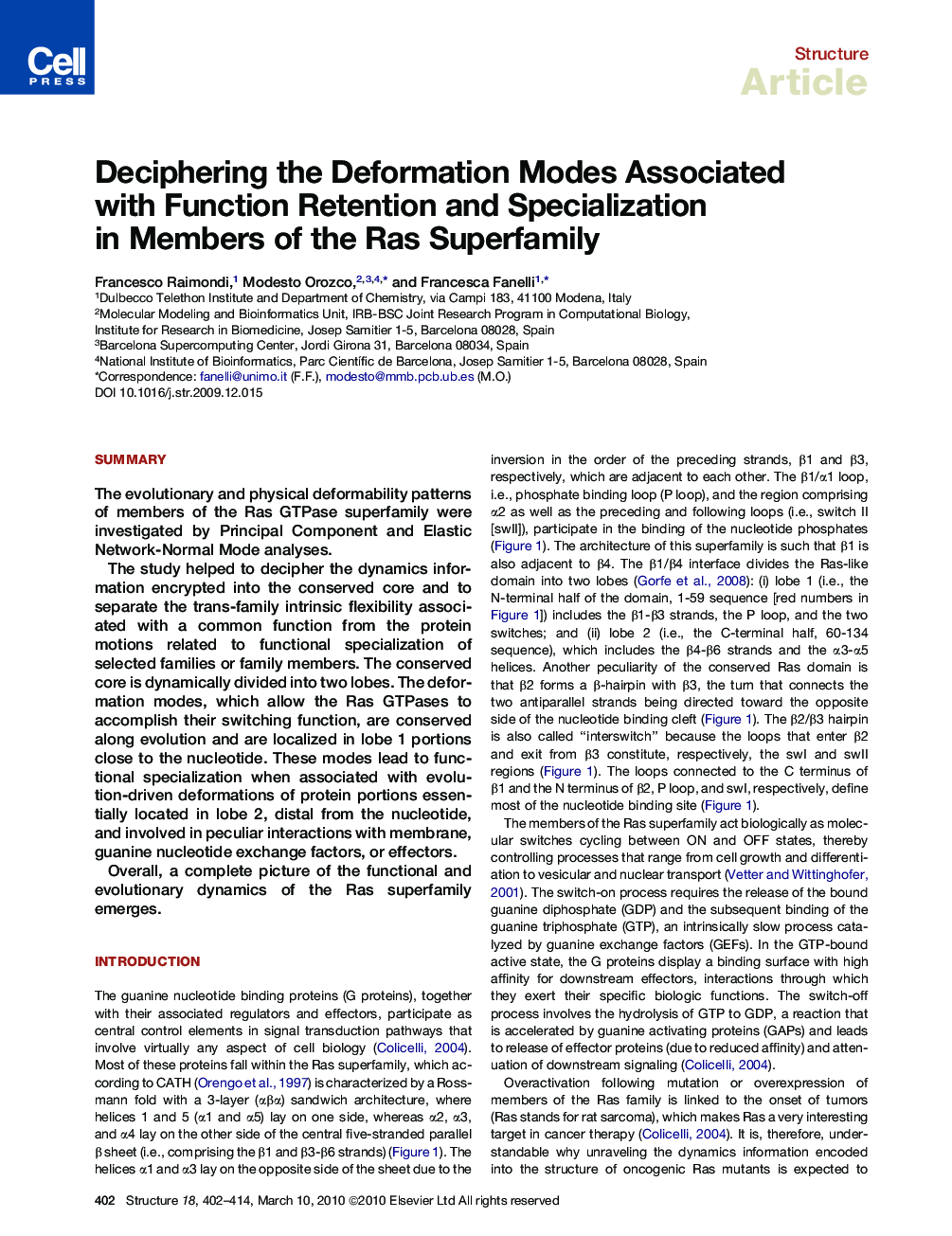| Article ID | Journal | Published Year | Pages | File Type |
|---|---|---|---|---|
| 2029955 | Structure | 2010 | 13 Pages |
SummaryThe evolutionary and physical deformability patterns of members of the Ras GTPase superfamily were investigated by Principal Component and Elastic Network-Normal Mode analyses.The study helped to decipher the dynamics information encrypted into the conserved core and to separate the trans-family intrinsic flexibility associated with a common function from the protein motions related to functional specialization of selected families or family members. The conserved core is dynamically divided into two lobes. The deformation modes, which allow the Ras GTPases to accomplish their switching function, are conserved along evolution and are localized in lobe 1 portions close to the nucleotide. These modes lead to functional specialization when associated with evolution-driven deformations of protein portions essentially located in lobe 2, distal from the nucleotide, and involved in peculiar interactions with membrane, guanine nucleotide exchange factors, or effectors.Overall, a complete picture of the functional and evolutionary dynamics of the Ras superfamily emerges.
► Ras superfamily functional dynamics depends on the topology of the conserved core ► The conserved Ras-like domain is dynamically divided into two lobes ► Trans-family switching function retention depends on deformations within lobe 1 ► Evolution-driven function specialization depends on deformations within both lobes
